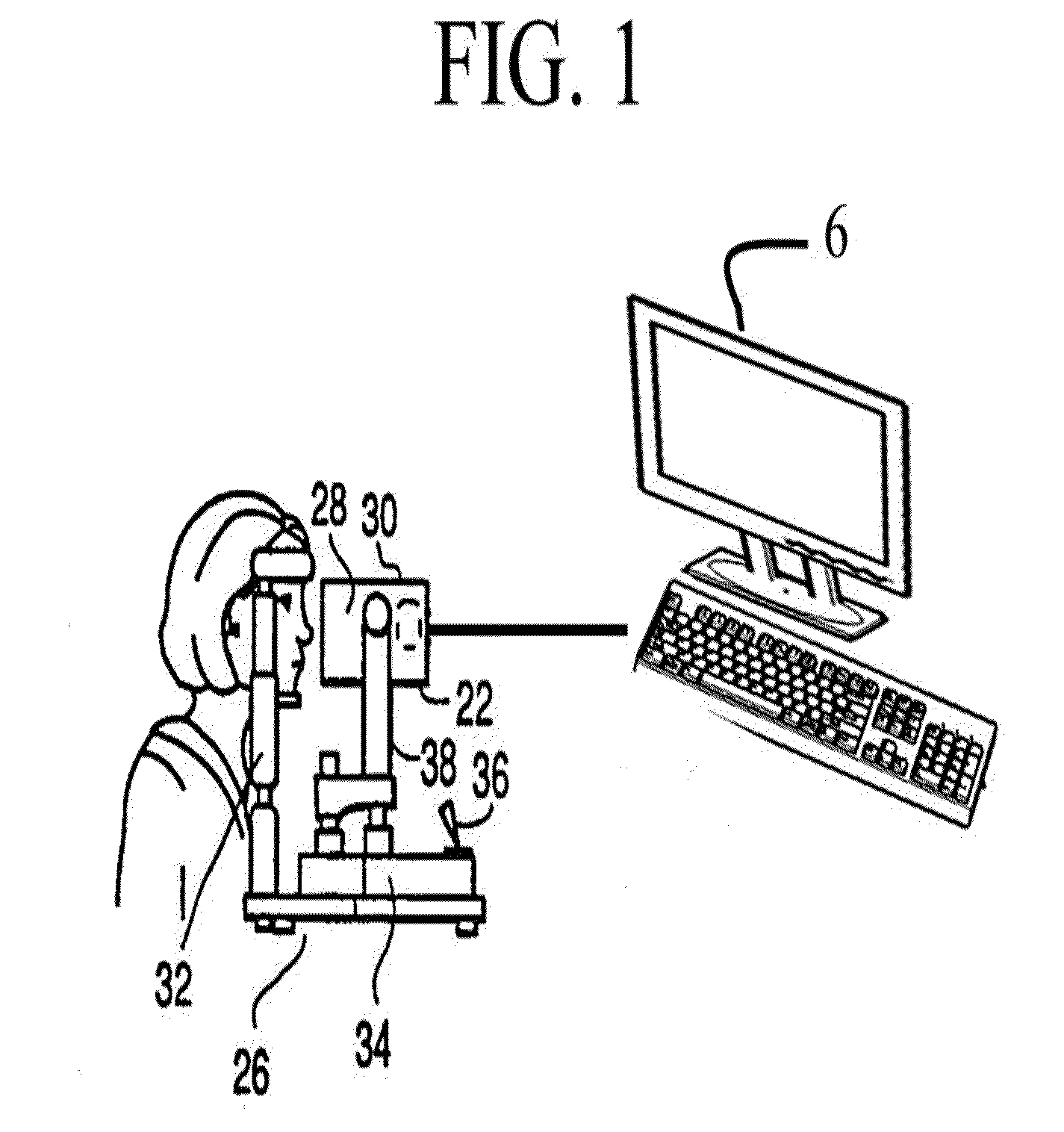Apparatus and method for imaging the eye
- Summary
- Abstract
- Description
- Claims
- Application Information
AI Technical Summary
Benefits of technology
Problems solved by technology
Method used
Image
Examples
Embodiment Construction
[0017]Retinal imaging has been traditionally performed with a fundus camera which uses an annulus of light to illuminate the retina, with the return image path coming back through the center of the illumination annulus. These devices often have complex illumination and imaging paths in order to allow the annulus to be as small as possible to accommodate a small pupil, while leaving ample aperture for imaging to pass back through the center, and to eliminate optical artifacts and reflections. This historical optical design was used to allow wider field imaging without reflections from the cornea and other surfaces. Traditional ophthalmoscopy (direct, indirect, slit lamp based or other) which have been based on a point source of illumination offer limited field of view if reflection-free images are desired. Retinal imaging systems based on point sources of light historically have only achieved a maximum of approximately thirty degree field of view, while still eliminating reflection a...
PUM
 Login to View More
Login to View More Abstract
Description
Claims
Application Information
 Login to View More
Login to View More - R&D
- Intellectual Property
- Life Sciences
- Materials
- Tech Scout
- Unparalleled Data Quality
- Higher Quality Content
- 60% Fewer Hallucinations
Browse by: Latest US Patents, China's latest patents, Technical Efficacy Thesaurus, Application Domain, Technology Topic, Popular Technical Reports.
© 2025 PatSnap. All rights reserved.Legal|Privacy policy|Modern Slavery Act Transparency Statement|Sitemap|About US| Contact US: help@patsnap.com



